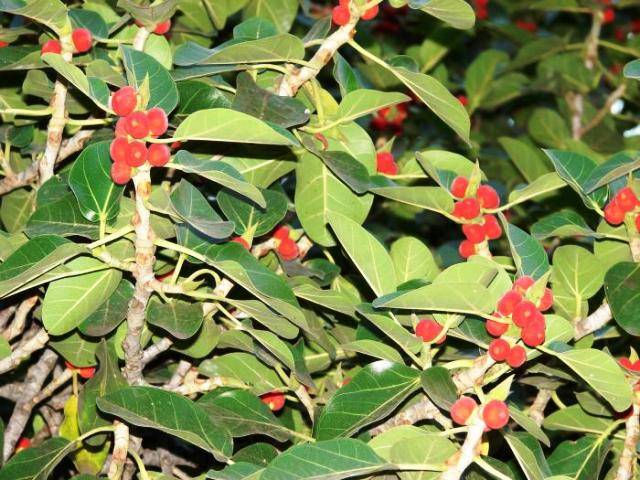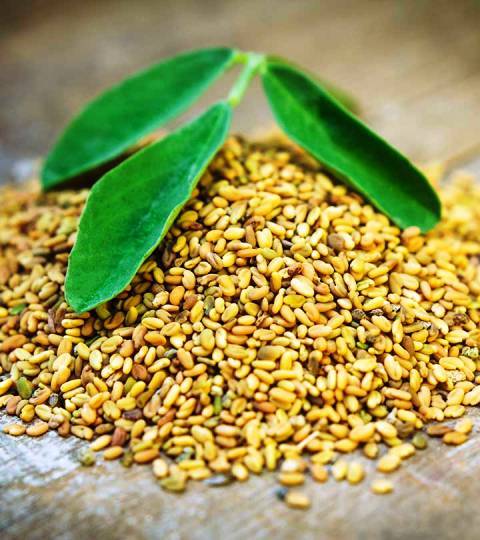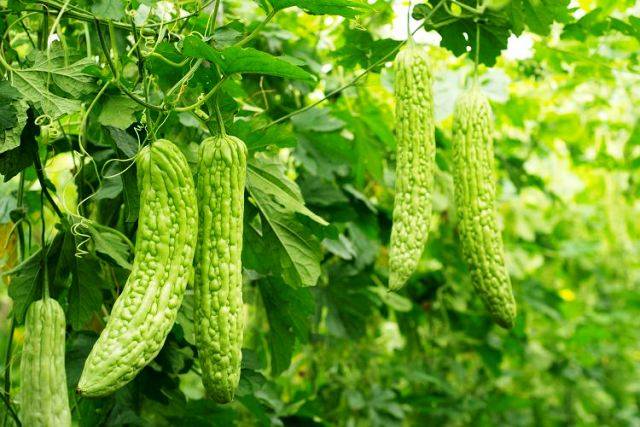
The use of medicinal plants in India is very old. Charaka and Sushrutahave mentioned the use of more than 1200 plant drugs with their action and application in CharakaSanhitaand Sushruta, respectively.
Charaka classified these plants into 50 groups on the basis of their action and use, while Sushruta made 38 groups of drugs. It is obvious from these references that each plant has more than one therapeutic action depending on the part used, combination and method of use, etc. For example, the bark of the Indian pipal tree (Ficusreligiosa L.) has a cooling effect and is useful in gonorrhea and ulcer, various skin diseases, and scabies.
Its decoction is given in case of hiccup and to stop the vomiting sensation. Latex boiled with milk is a good aphrodisiac. A medicated oil male from the root bark is applied externally in skin diseases caused by vitiated blood such as eczema, leprosy, and rheumatism. A component of bark is useful in diabetes. Fruit is laxative and digestive. In addition to a single use of any plant part for a disease, there are several mixtures of more than out plants, which are used in the treatment of various diseases.
Thus making a plant of multipurpose use. According to a report, more than 3000 plants have been found useful in one of the other kinds of cancer. Other examples of these therapeutic categories of plants are analgesic (101), anthelmintic (54), antidiabetic (39), antifilarial (3), antifungal (263), anti-inflammatory and astringent (142), antiprotozoal (55), antiscabies (18), Antiviral (96), anti-cancer (3000), useful for cardio vascular system (27), dental care (197), fertility influencing (37), gastrointestinal disorders (946), geriatric care (61), insecticidal (36), antibacterial (772), larvicidal (9), nematicidal (24), useful for nervous system (283), effective in snake bites (22) and traditional toxicology (158).
A group of antidiabetic plants is comprised of more than 30 species (Table). These plants posses’ antidiabetic properties as reported in various literature written on the basis of Indian traditional knowledge as well as pharmacological studies. Some of these plants like Gymnemasylvestre (Gudmar), Syzyiumcumini (Jamun), Momordicacharantia (Karela), etc. are very popular and known to one and all while the other is being used by the traditional healers and their knowledge is confined to them only.
The present article is an attempt to bring this unpopular Indian traditional knowledge about the anti-diabetic Indian flora to the common men of rural India who are still primarily dependent on the Indian system of medium to their health care.
Banyan tree/ Bargad (Ficusbenghalensis L.)
The banyan tree or Bargad is a large tree found all over India. The tree contains milky juice and a grayish smooth bark. The leaves and buds of the banyan tree are astringent. Their infusion is given in diarrhea and dysentery. Milky juice and seeds or fruits are useful for external application to injury and bruises, soaves and ulcers, in rheumatism and in lumbago. An infusion of the bark has specific properties for reducing blood sugar in diabetes, dysentery, gonorrhea and in seminal weakness. It is used as a powerful tonic. Leaves are heated and applied as a poultice to abscesses and wounds to promote suppression and discharge of pus. Infusion of the twigs is useful in hemoplysis.
The bark and young buds contain about 10 percent tannin, wax and caoutchouc, fruit contains oil, albuminoids, carbohydrates, fiber, and ash 5 to 6 percent. The bark contains a hypoglycemic principle (glycoside). A triterpene, a, and -sitosterol were isolated from the leaves of banyan tree. Tigilic acid ester of g-taraxosterol is found in the heartwood of the tree.
Leaves also contain flavonols known as quercetin-3 g alactoside and rutin. Dried bark on extraction with 95 percent alcohol yields an effective glycemic principle. Pharmacological actions of the tree include antiseptic, aphrodisiac, astringent, cooling, and hemostatic actions.
Research data indicate that the glycoside isolated from bark produced a hypoglycemic effect in normal rabbits but not in diabetic animals. The flavonoid compounds isolated from the bark were found effective as hypoglycemic agents on oral administration to normal fasting rabbits. The milking latex caused an initial lowering of fastening blood sugar in rats.
Another plant of the Ficus species known as F. racemosa (Gular or Country fig tree) is also useful in diabetes. Research findings indicate that the aqueous extract of the bark reduces the blood sugar in normal as well as in alloxan diabetic rabbits. Fine powder of bark is also used in diabetes.

Black plum /Jamun (Syzygiumcuminii L.)
Black plum or Jamun is a popular tree of rural India and an important avenue tree all over the country. The tree may grow over 1o meters high with many branches and regular glossy and leathery leaves. The small white flowers are produced in large numbers which after a period of time give rise to small green fruits measuring 1 to 3 cm long turning at maturity to bright purple or black, fleshy, sweet, and astringent one-seeded fruits.
The consumption of its fruits or taking 1/2 to 1 gram of the seed powder twice or thrice a day is very useful in diabetes. The water extract of the seeds can also be taken for the same effect. The bark of the tree (20 grams in 1 liter of water) is useful in dysentery, hemorrhages, and leucorrhoea. The leaf of Jamun is antibacterial.
Aerial parts are Central Vascular System (CVS) achieve and seed kernel is antiviral. The major constituents in stems, leaves, and fruits are alpha and beta-pinene, limonene, borylacetate. Flowers contain oleanolic acid and crategolic acid and seeds contain beta-sitosterol.

Fenugreek/Methi (Trigonellafoenum-graecum L.)
Commonly known methi is cultivated and marketed all over India. It is a useful medicinal plant and is widely used for culinary purposes. The plant may grow to a height of 25 to 45 cm with or without any branches. The plant has various uses. The plant is used to cure boils, tumors, and skin abscesses containing pus.
It is used to cure gout, neuralgia, or pain on a facial nerve. It is also used to cure sciatica or infection of the sciatic nerve resulting in pain at the back of the thigh and leg region. A poultice of the herb is applied to reduce swellings, a passerby made to the herb or of lint saturated with its decoction is used for the treatment of leucorrhoea. The leaves are aperients, they relieve indigestion and bilious disorders.
Paste of the leaves is also applied over dwelling and burns; it is hair tonic and is applied to the head for premature loss of hair. Leaves are used both internally and externally for their cooling properties. Seeds are eaten boiled or roasted, as a vegetable in dyspepsia, diarrhea, dysentery, colic, flatulence, rheumatism, enlargement of the liver and spleen, and chronic cough. As a lactogogue gruel of the seeds is given with milk and sugar. An infusion of seeds is given to smallpox patients as a cooling drink. Infusion of roasted seeds is administered for dysentery.
A paste of the seeds is used as a cosmetic to keep the skin smooth and clean. The mucilage produced when they are soaked in water is locally used overboils, carbuncles and abscesses. The seeds contain alkaloid trigonelline and choline saponin, essential oil, fixed oil, prolamin, mucilage, bitter extractive, and a coloring substance.
Air-dried seeds contain 0.38 percent trigonelline. Seeds also contain an oil (7%) used as a galactagogue. The defatted meal contains indigestible hydrophilic mucilage (50%). Seeds contain 0.8 to 2.2 percent steroidal sapogenins, particularly diosgenin which is contained in the oily embryo of the seeds. Fenugreek seed is attracting great interest as a source material for the extraction of diosgenin.

Malabarkino /Bijasal(Pterocarpus marsupium Roxb.)
Malabarkino or Bijasal is a moderate to large deciduous tree about 25 to 30 meters tall. The plant is commonly found in northern, central, and peninsular India at 1000 meters above sea level in Gujarat, M.P., and sub-Himalayan tracts. Tree bark yields a reddish gum known as kino gum, which becomes brittle on hardening and is very astringent. Kino contains kino tannic acid. It is used in diarrhea and toothache.
The bark is used in the form of powder or decoction in diarrhea. Bruised leaves are applied as a paste to boils, sores, and skin diseases. Decoction of the bark is very useful for diabetic patients. Research reports indicate that hypoglycemic action in rats rendered diabetic by alloxan when a decoction of Bijasal was administered orally.
The aqueous extracts of the plant exhibited hypoglycaemic effect in both acute and chronic conditions when experiments were conducted on normal rabbits. The decoction of the bark also showed hypocholesterolemic effect in rabbits. It has been found that marsupinol-Ã-flavonoid isolated from the heartwood stimulated caroliac contraction without affecting the heart rate.
In preliminary clinical trials on the extract of Bijasal, heartwood showed encouraging poglycemic effects in 14 diabetic patients. Water stored overnight in a tumbler made of 'Bijasal' heartwood is believed to have an anti-diabetic effect.
The roots of 'Bijasal' contain C-glycosyl-ß- hydroxydihydrochalkonepterosupin, pseudopaptigenin, liquiritigenin, isoliquiritigenin, garbanzol, 5-deoxykaempferol and p-hydroxybenzaldehyde. On extraction with petrol, the rootwood yielded a new sesquiterpene alcohol selin-4(15)en-1b, 11-diol, besides ß-eudesmol, erythrodiol-3-monoacetate and pterostilbene. Alkali soluble heartwood contains isoliquiritigenin, liquiritigeninin and pterostilbine but the sapwood contains pterostilbene. The bark contains Ã-epicatechin and pterostilbene. The heartwood also contains isoflavonoid glycol marsupol, carpusin, propterol and propterol B.
Gurmar (Gymnemasylvestre) (Retz.) R.Br
It is commonly known as Gurmar in Hindi. It is a large, stout woody climber with density-appressed hairy branchlets. The leaves are opposite, elliptic, or obviate - acute, thinly coriaceous, usually 2 - 6 cm long and 1 - 3 cm wide. It is commonly found in Central and Southern India, Western Ghats, and in the Goa region, especially dry forests in the hilly region of Jharkhand, Orissa, and M.P. The useful parts of plants are roots and leaves.
It is given the name of 'Gurmar' due to its property of destroying the taste of sugar. Studies revealed that it has the property of reducing blood sugar in diabetic patients. The leaf powder 2-4 gms. or leaf decoction 14-28 ml is recommended to control diabetes. Its intake stimulates insulin secretion.
The plant is considered antiperiodic, diuretic, and stomachic. In Ayurvedic practice, the root and leaf are used to treat headache, hydrocele, polyuria, leprosy, pruritis, poisoning, wounds, and bronchial asthma. Among women in some regions of M.P., the leaves mixed with a small portion of the seed kernel of 'Jamun' (Syzygiumcumini), are taken with water on an empty stomach to regularize the menstrual cycle.
The leaves when chewed, temporarily paralyze one's ability to taste sweet and bitter substances. The dried leaves of the plant contain a bitter neutral principle, albuminous, coloring matter, calcium oxalate, pararobin, glucose, carbohydrates, tartaric acid, glucoside, gymnemic acid (an anti - saccharin principle), gymnamine, nonacosane, hentriacontane, tritriacontane 4 conduritol, alkali, phosphoric acid, ferric oxide, manganese, and hydrocarbons. Saponins are present in the alcoholic extract of the plant.
The presence of alkaloids betaine, choline, and trimethylamine is also reported in the leaves. The bark contains a large number of calcium salts. Gymnemic acid resembles crysophanic acid and forms insoluble salts with alkaloids.

Bitter gourd/Karela (Momordicacharantia L.)
Commonly known as 'Karela' or Bitter gourd is a monoecious annual or perennial climber with slender, 4-5 angled multi-branched stems. Leaves of the plant are alternate, suborbicular, 3-10 cm long and 5 -1- cm wide, deeply palmate, 5 - 7 lobed, bare, deeply cordate, glabrous, or slightly pubescent, lobes irregularly toothed.
It contains pale to orange-yellow-colored flowers. Fruits are 5-25 cm long and 5 cm wide. The plant is cultivated in almost all parts of India up to an altitude of 1500 m. msl. It is widely used as a vegetable. The whole plant is used in traditional Indian medicine and is the source of 'Karavellam', a reputed drug used to treat diabetes mellitus.
In Ayurveda, the fruit is considered laxative, antidiabetic, cardio-tonic, anthelmintic, and a digestive stimulant; it is used to treat cough, respiratory disorders including asthma and bronchitis, fever, intestinal worms, ulcers, skin diseases, biliousness, anaemia, jaundice, rheumatism, gout, liver and spleen complaints, urinary discharge, flatulence and piles. Both the fruits and leaves are used as a vermifuge and for treating piles, leprosy, and jaundice. The plant contains alkaloid mormoridicine, saponin, carotene, glucosides, and highly aromatic essential oil. Fruit contains a hypoglycaemic substance charantin and ß-sitosterol - glucoside and stigmast-5,25 - diene - 3 B - O - glucoside. Fruit juice orally administered showed activity in normal administered showed activity in normal and diabetic rabbits and may have clinical usefulness in diabetes.
Article by:
C.S. Raghav - Senior Scientist-cum-Head, ICAR- Krishi Vigyan Kendra, West Siang, Basar, Arunachal Pradesh
RK Singh - Senior Scientist-cum-Head, Krishi Vigyan Kendra Hazaribagh, Jharkhand
MS Baruah - Asst. Chief Technical Officer, ICAR- Krishi Vigyan Kendra, West Siang, Basar, Arunachal Pradesh
Prashant Raghav - M. Tech Scholar (Industrial & Production Engineering), Amity University, Gurgaon, Delhi NCR















